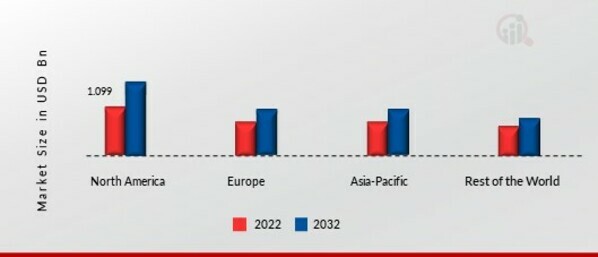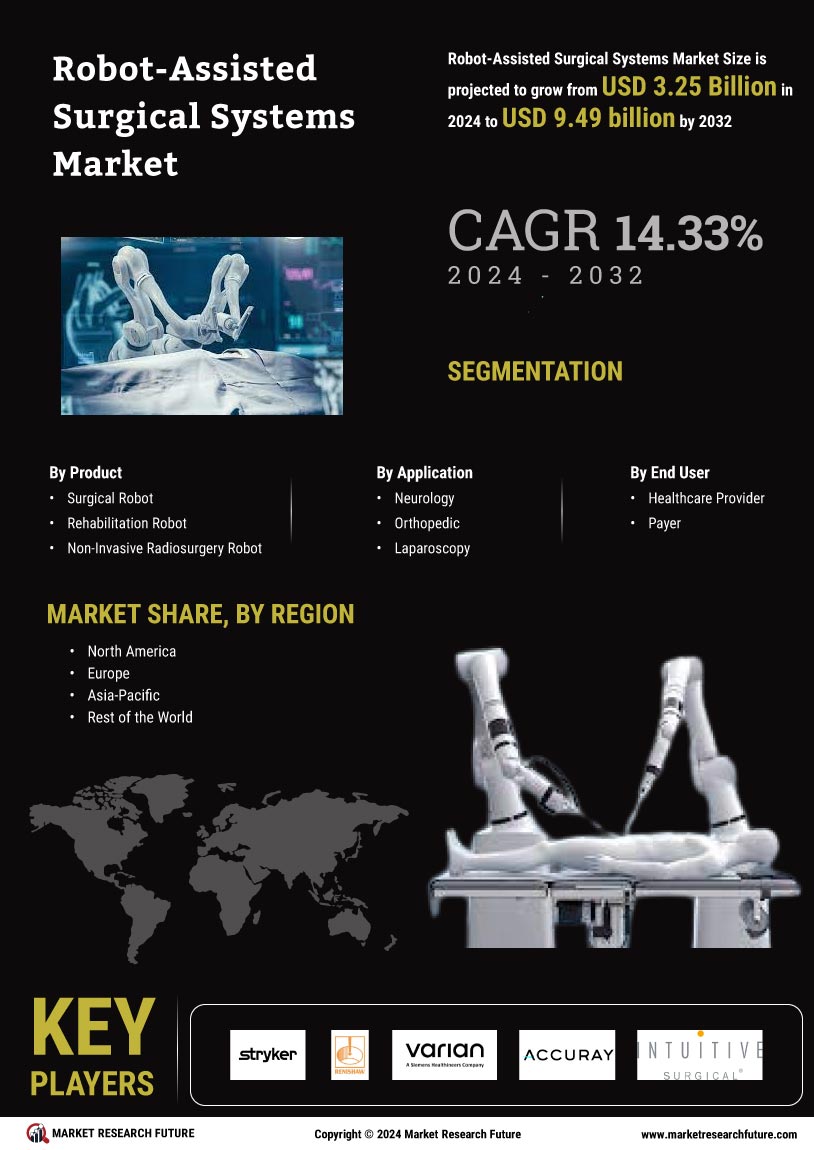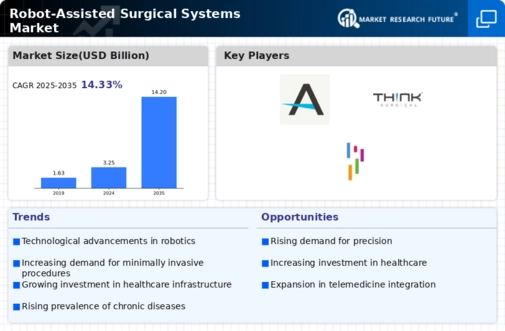By Region, the study provides market insights into North America, Europe, Asia-Pacific, and the Rest of the World. The North American Robot-Assisted Surgical Systems market accounted for USD 1.09 billion in 2022 and is expected to exhibit a significant CAGR growth during the study period.
The increased adoption of automated surgical tools and the expansion of next-generation healthcare system facilities in the United States is driving the regional market. Additionally, it is anticipated that the regional market of robot-assisted surgical systems will be driven by the U.S.'s shortage of medical specialists and surgeons relative to the patient population.
Moreover, the rising prevalence of chronic diseases such as diabetes, cancer, and cardiovascular disease in the United States is driving the demand for robot-assisted surgical systems in this region.
Further, the significant countries studied in the market report are the U.S., Germany, Canada, the UK, France, Spain, Italy, Japan, India, Australia, China, South Korea, and Brazil.
Figure 3: Global ROBOT-ASSISTED SURGICAL SYSTEMS MARKET SHARE BY REGION 2022 (%)
Source: Secondary Research, Primary Research, Market Research Future Database, and Analyst Review
European robot-assisted surgical systems market accounts for the second-largest market share due to the emergence of advanced robot-assisted laparoscopic procedures and the quality of treatment of new and existing medical indications. This is mainly attributable to elements like a developed healthcare infrastructure and the rising adoption of robotic surgical systems in various healthcare settings, which will support market expansion in this region.
Further, the German market of robot-assisted surgical systems held the largest market share, and the UK market of robot-assisted surgical systems was the fastest-growing market in the European region.
The Asia-Pacific market of Robot-Assisted Surgical Systems is expected to grow at the fastest CAGR from 2024 to 2032, owing to an increasing patient population and increased adoption of advanced automated surgical instruments. Moreover, raising awareness of the benefits of advanced medical technology and expanding modern healthcare facilities are expected to drive market growth in the region.
Besides, rising government initiatives to build advanced healthcare infrastructure are attracting foreign companies to invest in automated instrument development, which is expected to fuel the growth of the robot-assisted surgical systems industry in this region over the forecast years.
Furthermore, China’s market of robot-assisted surgical systems held the largest market share, and the Indian market of robot-assisted surgical systems was the fastest-growing market in the Asia-Pacific region.





